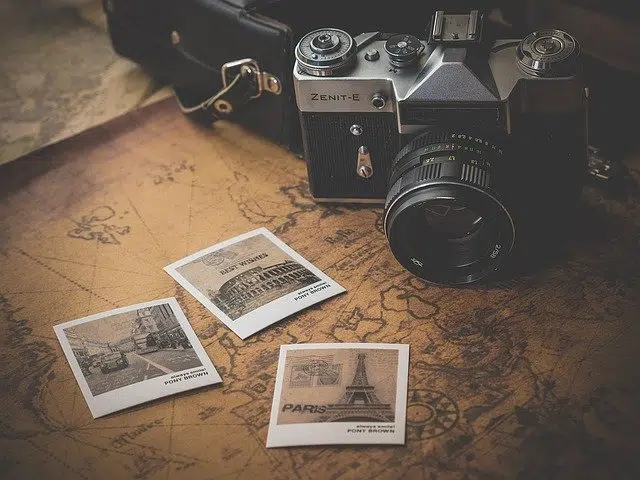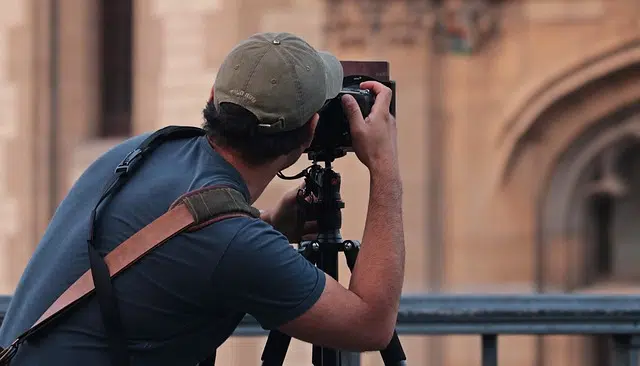
It can be said that photography is a technical procedure and, at the same time, an art.
Photography is the procedure and art that allows you to fix and reproduce , through chemical reactions and on surfaces prepared for it, the images that are collected at the bottom of a camera obscura.
The principle of the camera obscura consists of projecting the image that is captured by a small hole on the surface. In this way, the size of the image is reduced and its sharpness can be increased. The storage of the image obtained can be done on a sensitive film or in CCD and CMOS sensors or digital memories (in the case of so-called digital photography ).
Development of photography
The daguerreotype , invented by Louis Daguerre in 1839 , is considered the precursor of modern photography. Daguerre used a layer of silver nitrate on a copper base. The positive was captured in mercury and the image was fixed by placing the plate in a solution of sodium chloride or diluted sodium thiosulfate.
George Eastman was a great promoter of photography when, in 1888 , he introduced the first Kodak camera with a roll of photographic paper. This technique replaced glass plates. Another important step occurred in 1948 , with the launch of the Polaroid technique that allowed photos to be developed in just one minute.
Nowadays, photographs are usually retouched with software to eliminate those imperfections that have been recorded and perform all kinds of actions, such as enhancing colors, playing with focus or superimposing various images on the same one, for example.
It is important to keep in mind that, in addition to being used for scientific purposes, photography has managed to establish itself as an art . Images taken by art photographers are often exhibited in exhibitions and museums.

To take good photographs you have to take into account the lighting conditions, among other factors.
Part of a reflex camera
The most important parts of a reflex camera are:
- The objective (made up of the lenses that are responsible for directing the light towards the sensor to achieve the best fidelity to the scene you want to capture. Depending on the aperture, the objective can be more or less bright);
- The shutter (is formed by a set of blades that allow light to pass through, controlling the amount that must enter);
- The viewfinder (allows the photographer to see the scene and choose the subject of the image);
- The sensor (is responsible for capturing information about the scene; it is made up of pixels that are sensitive to light that record the image data that will later be processed).
Photography as a record of life
Throughout history, human beings have known how to use different tools at their disposal to leave records of their passage through this world and of those events that would mark a before and after in the history of humanity.
And the discovery of photography and the advances that occurred over the years in it, allowed us to later have a notion of certain things that happened a long time ago and that considerably affected societies around the world , such as the Second World War. It was thanks to photography and literature that we had a true notion of the atrocities committed by human beings against their own species under artificial arguments and supremacist discourses .
With the advancement of technologies, photography has become available to everyone, allowing everyone who has a mobile device to capture images and keep them forever, sharing them with their friends. Also, the rise of social networks like Facebook makes it possible for tools to share images to be increasingly instantaneous and public, allowing an image to travel to all corners of the globe in just seconds.
The nature photographer
Colombian Memo Gómez trained at the New York Institute of Photography . He specializes in bird and wildlife photography in general, seeking to raise awareness with his work about the importance of conserving biodiversity.
Author of the book "Nature and Astonishment" and ambassador for WWF Colombia , Vanguard Photo Global and Sony Alpha , he has won numerous awards and teaches basic photography and nature photography workshops. Gómez also has great popularity on social networks, accumulating thousands of followers on Instagram and X where he can be found as @MemoGomezfoto .
– What qualities, tools and resources do you consider essential for a nature photographer to unleash their full potential?
The nature photographer must be a curious person, patient in the field, a planner, knowledgeable about the subject of his photography, a student of technology and photographic technique and must love telling stories with his images. Another vital characteristic for this art is loving nature and respecting it, in addition to knowing how to stay motivated in extreme environmental, social and physical conditions, where comfort is not common.
The nature photographer needs to have training in environmental and conservation issues: the more hours of work and observation in nature he has, the more stories he will think of telling graphically; Simultaneously, the more you master the photographic technique, the more surprising results you will have. In this type of photography everything happens so fast that it is not enough to understand the camera, you have to master it.
The necessary tools for this art are a fast camera to focus with bursts and another with high resolution and dynamic range; the first for the action scenes and the second for the landscape and portrait scenes. Or failing that, one that is good for both, with a super-tele lens (long) and a shorter one for landscape and portrait. If you do macro photography you will require a macro lens. The computer with developing and editing applications is essential.
Memo Gomez
– What has been the most shocking, surprising or emotional experience you have had thanks to photography?
The most shocking moment was seeing an alligator in Los Llanos Orientales catch and swallow a small chigüiro. The experience as a photographer that moves and excites me outside the field is when the public tells me that they have learned to value, love and respect nature thanks to my work, this is the reason that continually takes me to the mountains.
Memo Gomez
– From your point of view, how should we proceed, what behaviors are valid and what are not, when photographing animals?
Valuable question: you have to move like someone who becomes part of the ecosystem and has no interest in hunting or killing any species. It is about moving with harmony and not showing particular interest in any species (they perceive it and only imagine an intention) and understanding that with patience the species know if a subject is risky or not. Although it is best to go unnoticed in a hiding place, you should avoid changing the environment permanently just to get an image. For example, it is about bending a branch for a few seconds and then returning it to its place without breaking it, it is about not scaring the species and avoiding making them uncomfortable as much as possible. The environmental balance of photographic work must always be in favor of biodiversity; That is, the results of the environmental photographs have to be very favorable for the species. The impact of your presence in their habitat must be more than compensated, it is a simile with science.
We must understand particular situations such as nesting, where our intervention can expose chicks or juvenile individuals to predators. We have to avoid changing the routines of the species and instead take advantage of them to record them without affecting the behavior of individuals.
The bottom line is respect, and patience will always produce better results than speed.
Memo Gomez
